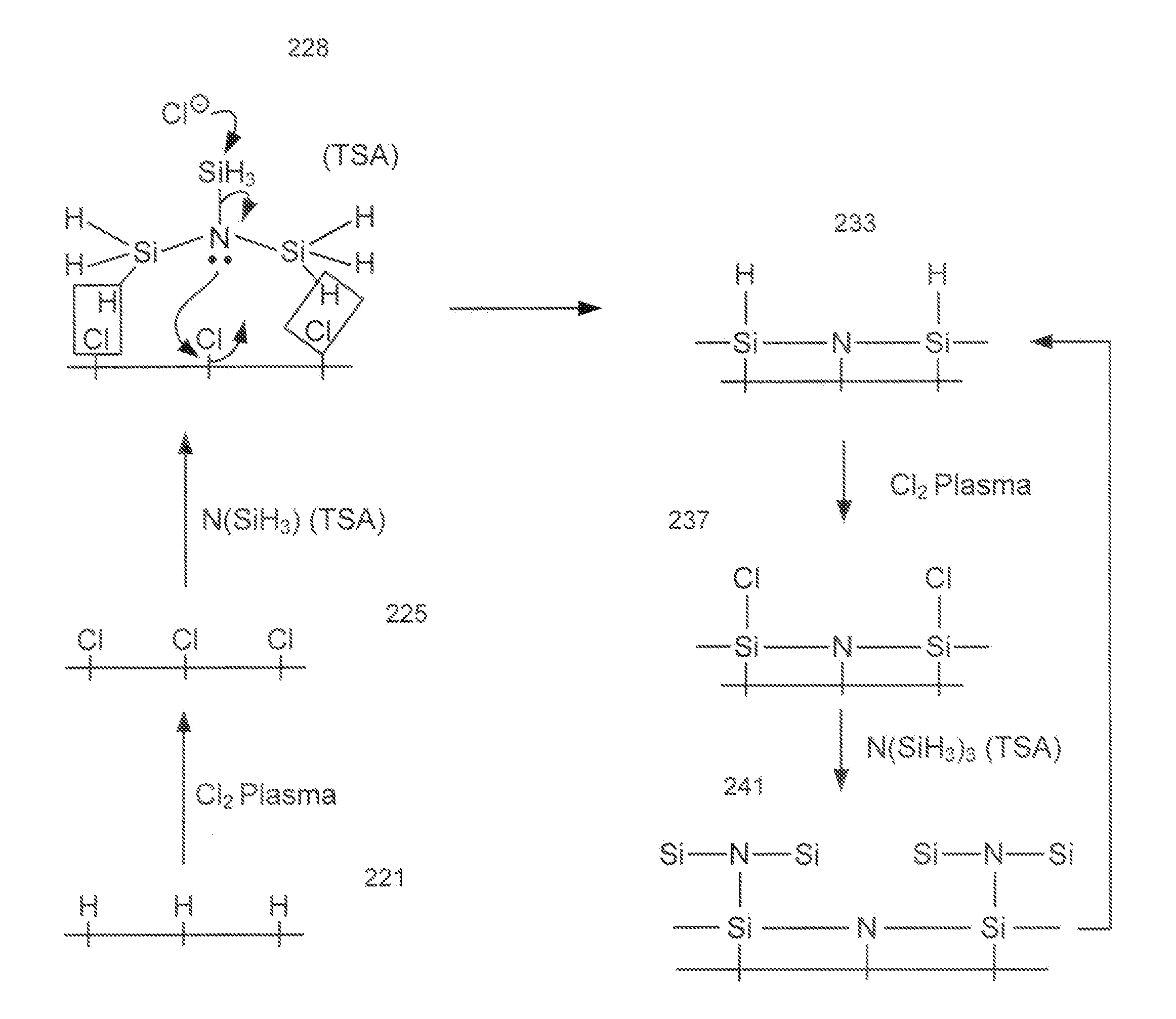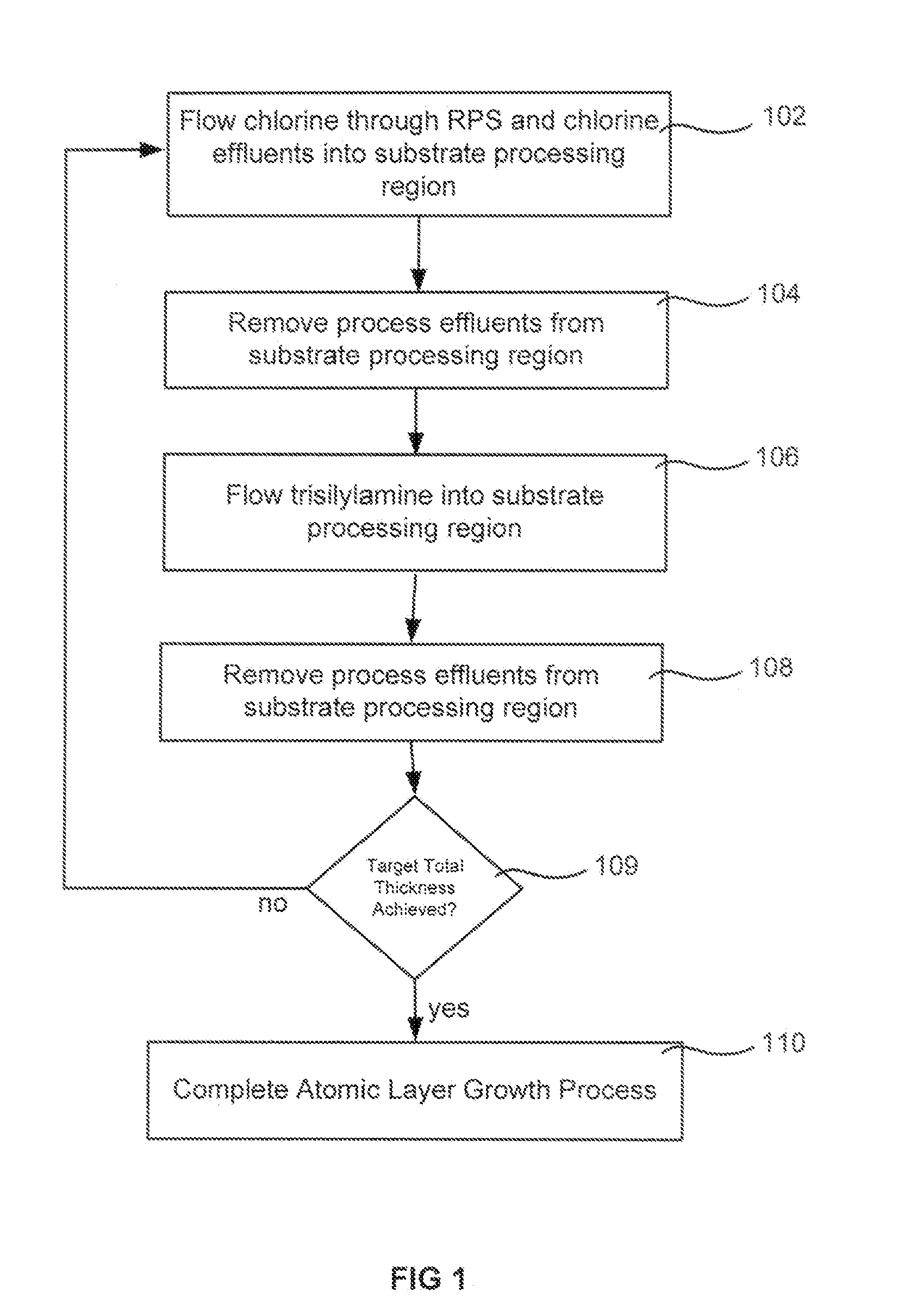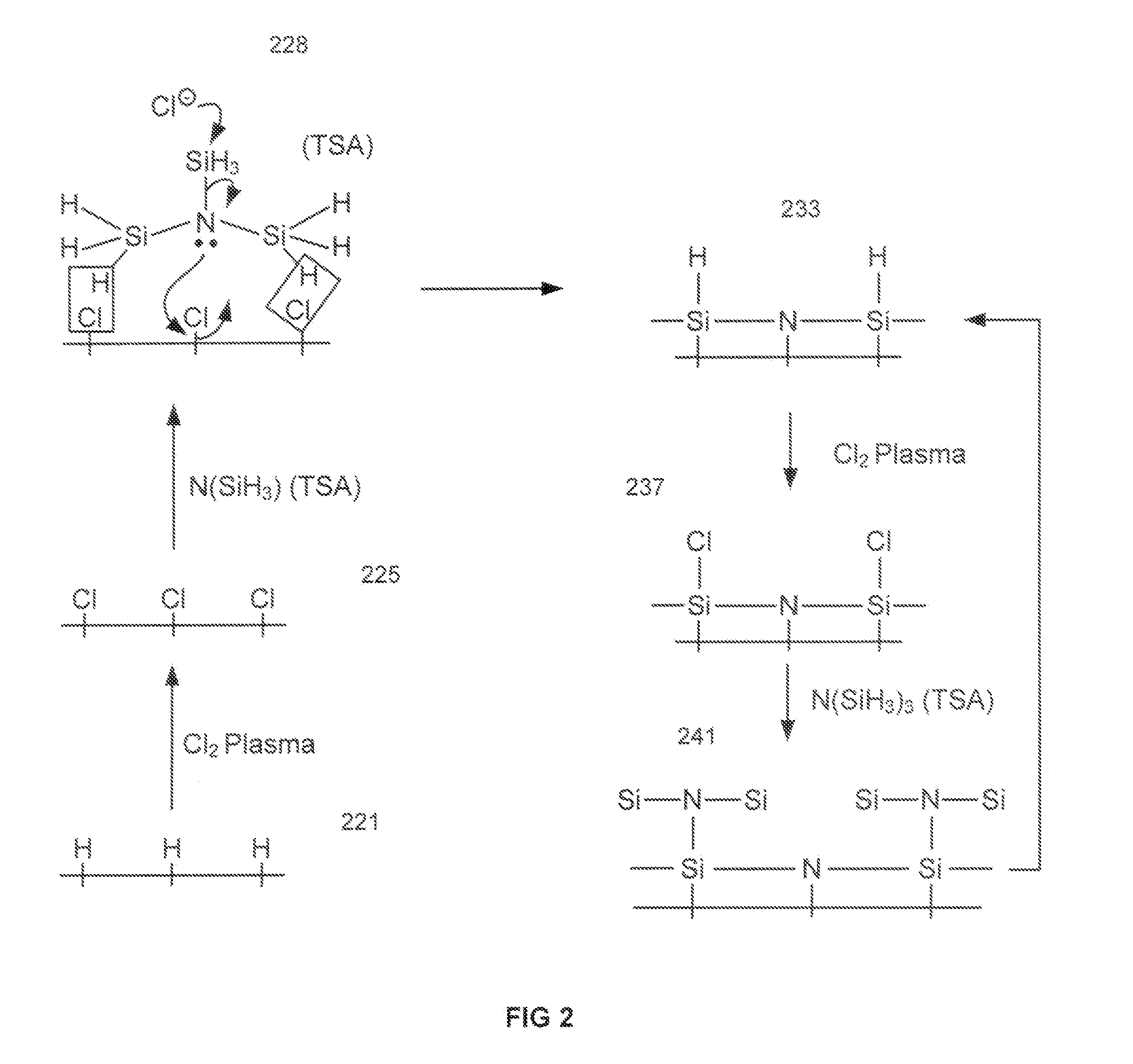Atomic layer deposition of silicon nitride using dual-source precursor and interleaved plasma
- Summary
- Abstract
- Description
- Claims
- Application Information
AI Technical Summary
Benefits of technology
Problems solved by technology
Method used
Image
Examples
Embodiment Construction
[0015]Atomic layer deposition using a precursor having both nitrogen and silicon components is described. The deposition precursor contains molecules which supply both nitrogen and silicon to a growing film of silicon nitride. Silicon-nitrogen bonds may be present in the precursor molecule, but hydrogen and / or halogens may also be present. The growth substrate may be terminated in a variety of ways and exposure to the deposition precursor displaces species from the outer layer of the growth substrate, replacing them with an atomic-scale silicon-and-nitrogen-containing layer. The silicon-and-nitrogen-containing layer grows until one complete layer is produced and then stops (self-limiting growth kinetics). Subsequent exposure to a plasma excited gas modifies the chemical termination of the surface so the growth step may be repeated. The presence of both silicon and nitrogen in the deposition precursor molecule increases the deposition per cycle thereby reducing the number of precurso...
PUM
| Property | Measurement | Unit |
|---|---|---|
| Time | aaaaa | aaaaa |
| Pressure | aaaaa | aaaaa |
| Width | aaaaa | aaaaa |
Abstract
Description
Claims
Application Information
 Login to View More
Login to View More - R&D
- Intellectual Property
- Life Sciences
- Materials
- Tech Scout
- Unparalleled Data Quality
- Higher Quality Content
- 60% Fewer Hallucinations
Browse by: Latest US Patents, China's latest patents, Technical Efficacy Thesaurus, Application Domain, Technology Topic, Popular Technical Reports.
© 2025 PatSnap. All rights reserved.Legal|Privacy policy|Modern Slavery Act Transparency Statement|Sitemap|About US| Contact US: help@patsnap.com



